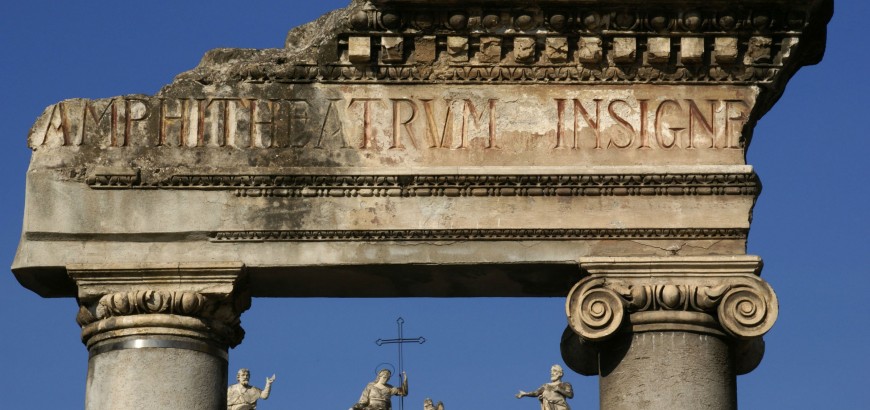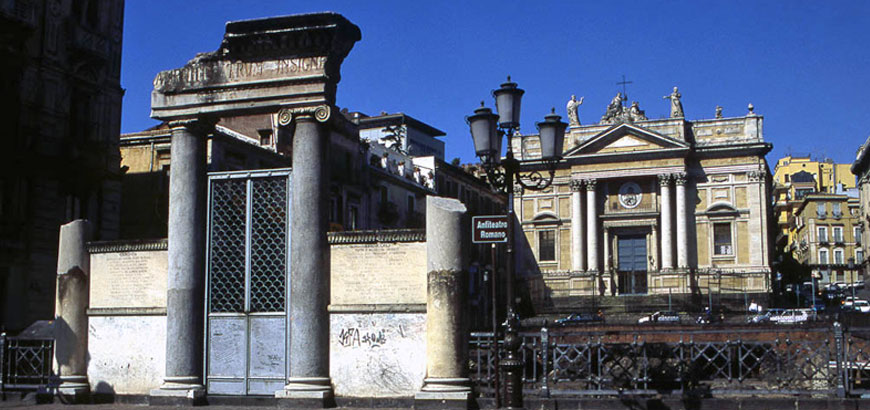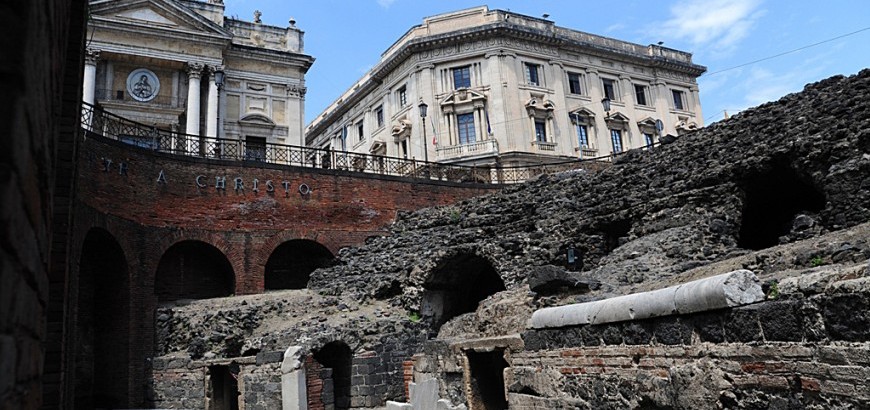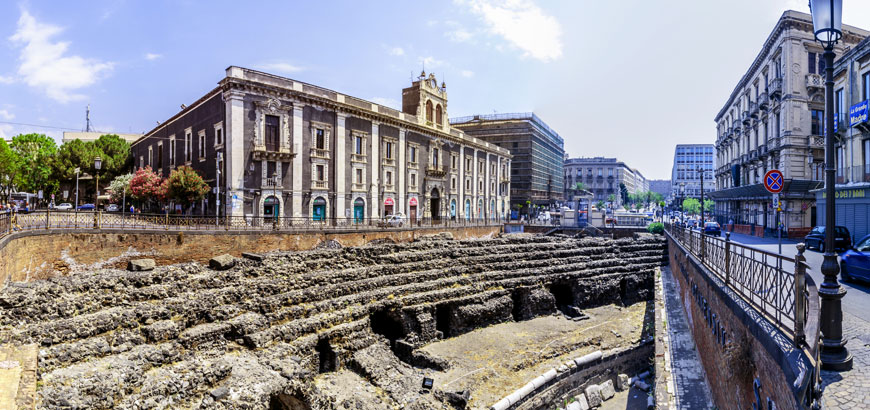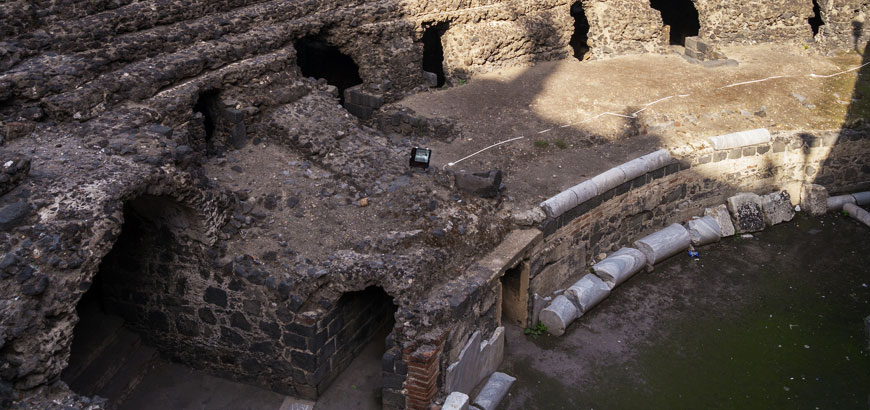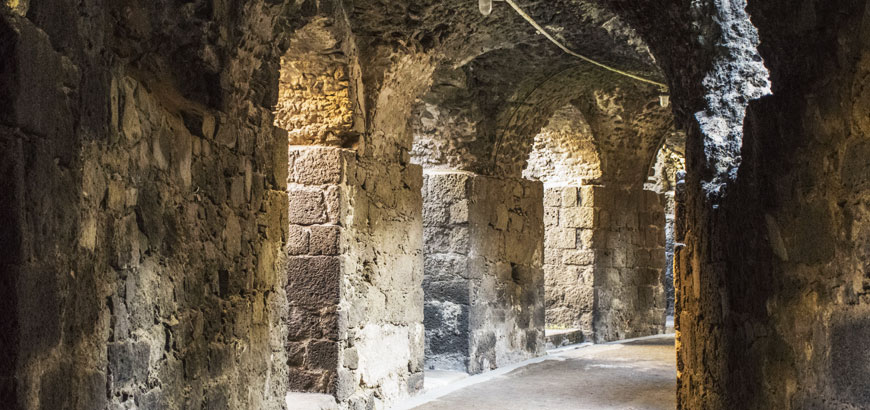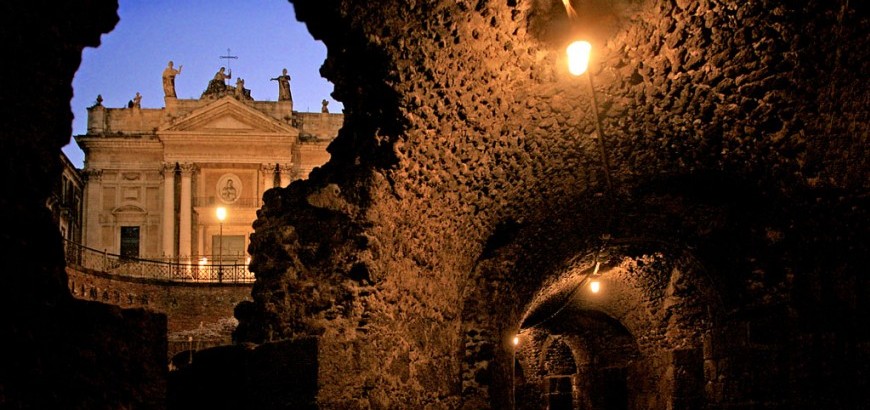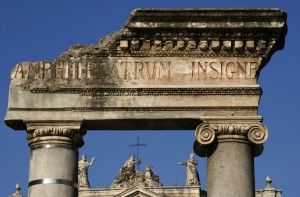
Roman Amphitheatre
A part of the Roman Amphitheatre’s remains are visible in the centre of Piazza Stesicoro.
The construction date is uncertain, it’s assumed to have been completed during the second century A.D.
It’s certain, however, as attested by historians, that already at the time of Theodoric (494-526 AD) the amphitheater was in a state of abandonment and the people of Catania asked the emperor for permission to use its stones as building materials.
The great Roman monument, second in size only to the Colosseum, should have an outer circumference of 300 meters and is almost completely covered by modern buildings.
The grandeur of the monument is perceived by the visible remains in two cross walls of via Manzoni, in fact the foundation comes to the via Penninello.
The work to unearth the remains, which are observable in piazza Stesicoro, was begun only in 1903 at the behest of Mayor Giuseppe De Felice.
The “underground” monument is well preserved and visible, overlooking Piazza Stesicoro, below the road surface. Also it was used by King Roger as a source of building materials, indeed, in 1091 lava stone in the amphitheater was used for the construction of the Saint Aghata’s Cathedral and for the building of ancient city’s walls.
